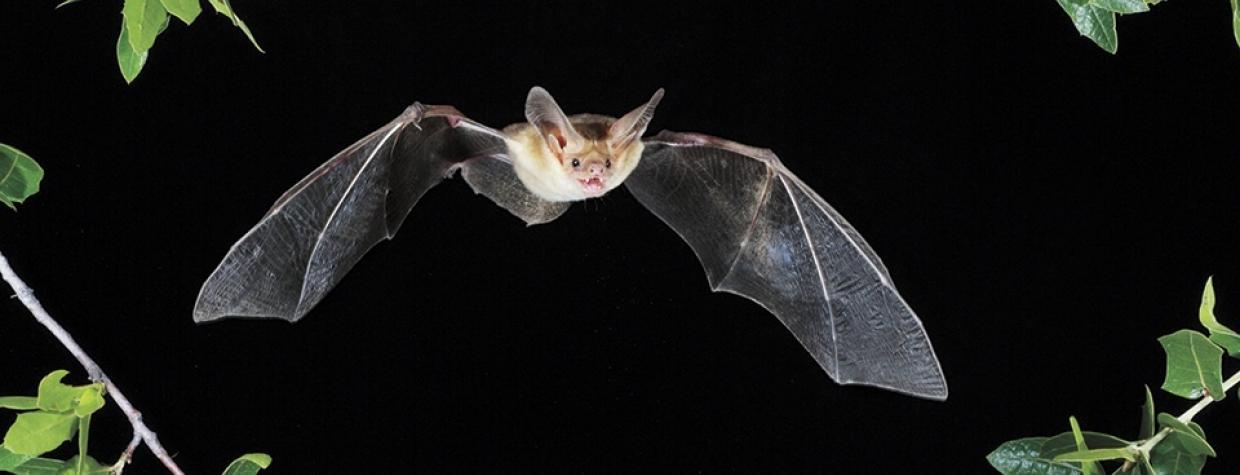If pallid bats could be kept as pets, they'd be all the rage in Arizona — despite the creepy claws, vampiric reputation and complete dearth of cuddliness. Because what they can do — very well — is eat scorpions. And centipedes, cicadas, crickets, beetles, lizards and even mice.
The pallid bat is one of two known bat species immune to scorpion venom. And it's the only bat species that snatches the majority of its prey from the ground. In fact, they've been known to get caught in mousetraps.
Pallid bats prey on a documented 54 species of creepy crawlies. Every night, they can devour up to half their weight in insects. A mother nursing her young can consume her entire body weight in insects.
Not that they're heavyweights. Their wingspan can stretch up to 16 inches, yet they tip the scale at less than an ounce.
As the name suggests, the pallid bat has pale fur that ranges from beige to butterscotch. If you get up close and personal, you'll notice its horseshoe-shaped snout. You might also get a whiff of the skunk-like odor it emits from its nostrils as a defense mechanism.
Pallid bats rely less on echolocation than other bats, using low-intensity sonar so they can silently sneak up on prey. They're not particularly adept fliers, but they can walk. And they're equipped with eyes and ears so oversized and fine-tuned they can actually hear the pitter-patter of insect feet.
Like many of Arizona's 28 bat species, pallid bats pollinate cactuses. Unlike other bats, it's believed they only do this incidentally — they're probably after the insects inside the flowers, not the nectar.
Pallid bats range from southern Canada to northern Mexico. In Arizona, they inhabit elevations up to 6,850 feet in summer, but they remain only in the warmer southern region during winter, when they go into torpor.
Sociable creatures, pallid bats roost en masse with both their own and other bat species. They're quite sensitive to temperature swings, humidity and noise, so they gravitate toward rock crevices, mines, caves and hollow trees. They might even make your home their home, roosting in attics or overhangs in roofs — which, if you have a scorpion problem, is great news.

